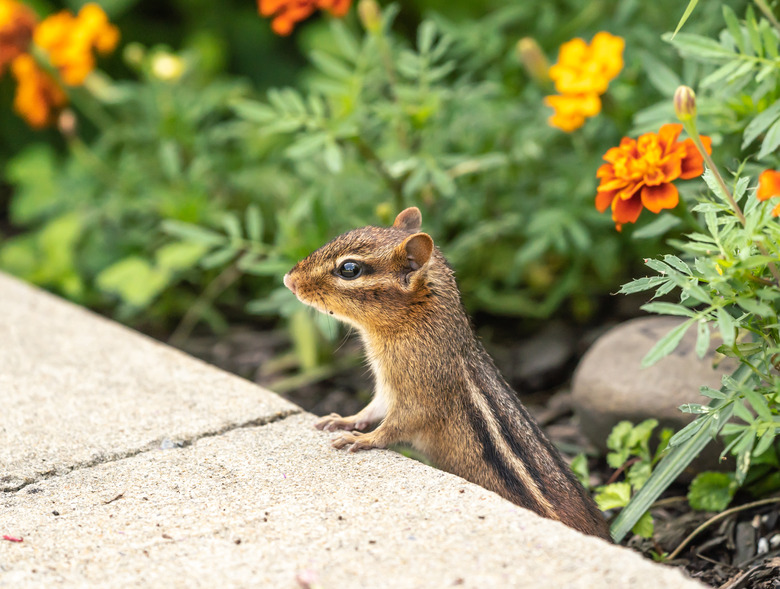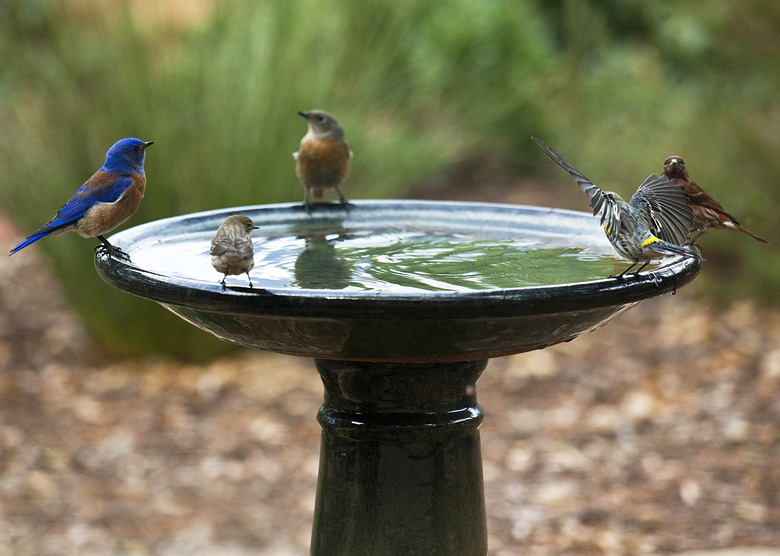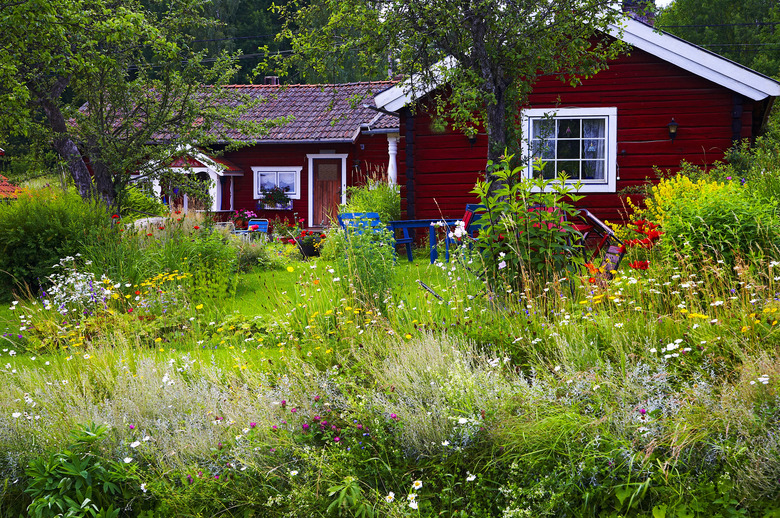Wildlife Gardening — What You Should Know
We may receive a commission on purchases made from links.
Wildlife gardening is loosely defined as the practice of creating and maintaining a growing garden that's friendly to wildlife. Because almost every living garden attracts wildlife of some kind, you can argue that just about all gardens are wildlife gardens. The difference is that the true wildlife garden intentionally caters to wildlife, sometimes even at the expense of a traditional garden's classic beauty.
For example, a wildlife gardener may choose to plant relatively subdued prairie coneflowers rather than gorgeous but nectarless hybrid roses. The former will draw in butterflies and hummingbirds as well as songbirds to eat the seeds, while hybrid roses are fairly ho-hum as far as creatures are concerned.
That's not to say that wildlife gardens aren't beautiful. The naturalness alone is quite attractive to many people, and a garden with beautiful butterflies, bright goldfinches, turtles and toads, garden spiders, and cheerful chipmunks is just as much fun as a garden filled with spectacular hybrid flowers.
Practicing Wildlife Gardening
Practicing Wildlife Gardening
Wildlife gardening can be practiced as informally or as rigidly as you want. At the informal end, you might choose to simply include a few plant species that appeal to the creatures you enjoy watching — for example, a couple of milkweed plants to provide food and egg-laying areas for monarch butterflies or some zinnias to offer nectar to hummingbirds and seeds to finches.
At the most serious end of the spectrum, you may practice wildlife gardening with intensity, advocating for an utterly natural, ecologically sound gardening practice. Such gardeners can develop great fervor, and online forums are filled with gardeners arguing over what methods are most authentic. For most, the goal will be simply to get more enjoyment from watching wildlife in the garden in the same way that we enjoy the plants.
If there is a universal trait among wildlife gardeners, either casual or deadly serious, it's that you need to be something of a naturalist who enjoys viewing living creatures in the garden. This definition includes most gardeners, as the enjoyment of plants and enjoyment of wildlife seem to go hand in hand.
There is nothing more fascinating than tending plants in the early morning and coming across a beautiful, colorful garden spider sneaking up on cabbage moths that have been trapped in a web gleaming with dew and early morning sunshine. Few gardeners have any fear of bees, as these pollinators seem to know that gardeners are friends, not foes.
If there is a single key to successful wildlife gardening, it's learning to anticipate what wild creatures need and providing for those needs. Those needs are easy to understand: water, food, shelter, and safety.
Providing Water for Wildlife
Providing Water for Wildlife
Most wild creatures are quite adept at finding moisture in the wild, but if there are dependable sources of clean, uncontaminated water right in your yard, then critters will naturally spend more time there. At the very least, a single birdbath filled with fresh water will provide a dependable watering hole for birds, squirrels, and pollinators, such as butterflies.
Better yet is to include a small landscape pond, preferably without fish. Pond fish are usually exotic species, like koi, which eat insect larvae that would otherwise provide food for indigenous birds and amphibians. In addition to a birdbath or pond, a couple of shallow dishes or clay saucers of water filled with small stones will make water more accessible to toads and other ground-hugging creatures. An oscillating sprinkler run for an hour a day can be a virtual social spa for birds. Create a few depressions for natural puddles to form in your garden.
Providing Food for Wildlife
Providing Food for Wildlife
All creatures require food to survive, and good wildlife gardens provide sources of nutrition. The best method is to include the living plants that offer berries, seeds, nectar, or other sources of natural food. A garden that includes a mixture of these types of plants will not really need much else in the way of bird feeders or feeding stations. You may well want to plant some vegetables purely for their appeal to wildlife; birds and other animals are just as fond of tomatoes, cabbage, and green beans as we are.
Be careful with bird and wildlife feeders, as they can soon create an unnatural environment, such as when a herd of deer shows up each day at dusk or dawn to eat all the bird food along with your shrubs. Make sure the foods you offer are natural ones. A jar of grape jelly fed to Baltimore orioles is not a very healthful treat — not when you could instead plant a plum tree that provides a stopover spot in August and September as the birds begin heading south.
The common practice of throwing out old bread products to feed the birds and other animals is not a great strategy, as refined flour is not the most healthful nutrition. Opt instead for raw seeds and vegetables of various types. In other words, learn what birds and other animals eat in the wild and offer foods of that type.
Offering Shelter for Wildlife
Offering Shelter for Wildlife
Most animals are old hands at finding shelter when they need it, even leaving town to migrate when necessary. If you provide the kind of dependable shelter that creatures need to breed and raise young, then your wildlife garden will take on a whole new dimension. A few dense shrubs will be visited by songbirds to build nests, lay eggs and fledge their young right where you can watch them with binoculars.
A single large tree can be the single most important feature of a wildlife garden, as it becomes an entire ecosystem all on its own. An oak tree can provide shelter and roosting holes for birds, squirrels, or raccoons. The acorns provide food for many creatures, the sap may draw in butterflies and a single dying branch can be a colony for interesting beetles, which will also serve as food for birds.
There are a variety of commercial shelters available, including birdhouses, bee hotels, butterfly houses, bat houses, and toad homes. All of these have their place but make sure to choose designs that are specifically made for the types of animals you want to attract and install them so they are protected from cats and other predators.
Spiders, beetles, and other creatures are sometimes overlooked in favor of the relative glamour of colorful songbirds and butterflies, but a good wildlife garden also provides shelter for interesting insects, toads, turtles, and other small amphibians — maybe even a garter snake if you aren't squeamish. A single fallen log or tree stump can be an amazing domicile for all sorts of creatures. Many wildlife gardeners swear by the value of adding a small brush pile somewhere in the garden. A plank of wood slightly propped up makes a cool sheltering place for toads and other small creatures.
Providing Safety for Wildlife
Providing Safety for Wildlife
Nature being what it is, death is a natural occurrence in a wildlife garden, and a gardener soon learns not to get too disturbed by the occasional dead bird or chipmunk. You can't prevent this nor should you try. Some wildlife gardeners may be more fascinated than disturbed when a local fox or red-tail hawk arrives to hunt rabbits. It does make sense to try and protect your garden wildlife from unnatural threats, such as domestic housecats prowling for baby birds. If you include a pond, shape it so that animals that fall in have a means of escaping. There is nothing natural (or safe) about a slick-sided steel washtub/pond that creates a deadly trap for chipmunks.
Most important of all is to protect your wildlife from the threats posed by chemical pesticides and herbicides. An observant wildlife gardener quickly learns that a good garden ecosystem is a diverse one where there are numerous species of insects, many of which feed on damaging pests. A diverse number of minor disease infestations is not a problem either. Left to their own or managed in an earth-friendly way, garden pests and diseases have a way of finding their own balance. A great garden is not one devoid of insects and diseases but rather one that's incredibly diverse and full of small infestations, none of which is able to cause serious problems.
If you hold back and avoid spraying for pests, you will likely find that praying mantises and ladybeetles will arrive to eat the aphids, and toads and birds will soon make a banquet of Japanese beetle larvae. Serious weed infestations can be dealt with by hand-picking, but those that remain will have their seeds eaten by finches and their roots eaten by slugs, which will in turn be dug up and eaten by crows. If you look closely at a garden that's teeming with songbirds and other interesting wildlife, you will also see a garden that's teeming with insect life of all kinds.
Perhaps most serious of all is the impact that using pesticides has on pollinators, such as bees. Many pesticides contain neonicotinoids that continue to devastate the bee populations that are critical to pollinating both ornamental gardens and food crops.
If wildlife gardeners do nothing else, giving up the use of pesticides and planting species that nurture pollinator bees is the most important thing they can do. If an insect infestation is so severe that it threatens your garden, opt for the least toxic control method possible, such as organic insecticidal soap or neem oil.
Basic Principles of Wildlife Gardening
Basic Principles of Wildlife Gardening
Beyond the basics of food, water, shelter, and safety, there are some principles to follow if gardening for wildlife is your goal.
- Be diverse. Strive for lots of different species in your plant selection. The more types of plants you have, the more creatures will be fostered. Diverse gardens appeal to wildlife much more than the typical ornamental garden, where species are isolated in clusters. Diverse gardens also tend to be healthier gardens.
- Be messy. The habit of keeping the ground between plants spotless is not very useful in wildlife gardens. A lot of debris and ground clutter is heaven for the insects and small organisms that birds and other creatures use for food. Especially important is to allow some dead wood to decay on the ground. Dead wood will foster insect life for many birds and other backyard wildlife.
- Surrender the lawn. There is almost nothing wildlife-friendly about the typical turfgrass lawn, so if you really want to garden for wildlife, reduce the lawn space and add more planting areas. At the very least, carve out a nice shrub island and fill it with a few large, dense bushes.
- Plant dense. The more plants you have and the more crowded your garden, the more amenable it will be to wildlife. Your animal friends will appreciate a garden with lots of hiding spots and lots of food sources.
- Plant in layers. A good wildlife garden includes low ground covers, midlevel plants, tall perennials, vertical vines, larger shrubs, and a towering tree or two. Animals have different needs and preferences, and a well-layered garden encourages animal diversity.
- Emphasize seeds, berries, and fruit. Animals will be naturally drawn to plants that produce easily harvested seeds (think sunflowers) or edible fruits and berries. Even if you don't like raspberries yourself, a good thick bramble patch of raspberries will be a magnet for all sorts of birds and creatures.
- Plant large. For the best wildlife garden, try to include at least one good-sized shade tree, or if this isn't possible, plant a shrub island and let it grow oversized and a little messy. A large tree or shrub island is a Shangri-la for wildlife.
- Emphasize native plants. Most animals that visit your garden will be native creatures, so they will naturally prefer familiar native plant species. Heavily bred hybrid plants are often rather devoid of nectar and scent, and they do little for bees and other pollinators. That's not to say you can't have some spectacular hybrids or carefully bred tropicals in your garden but make sure you also have plenty of native plants to appeal to wildlife.
Certify Your Wildlife Garden
Certify Your Wildlife Garden
If you find that you're practicing most of these guidelines, you probably qualify to have your wildlife habitat garden recognized by the National Wildlife Federation. The benefits of the tax-deductible registration fee include:
- Being included in a national listing of certified wildlife habitats
- A subscription to the federation's newsletter
- A free one-year subscription to National Wildlife magazine
- A 10 percent discount on feeders, birdbaths, and other products
- A yard sign to identify your participation


